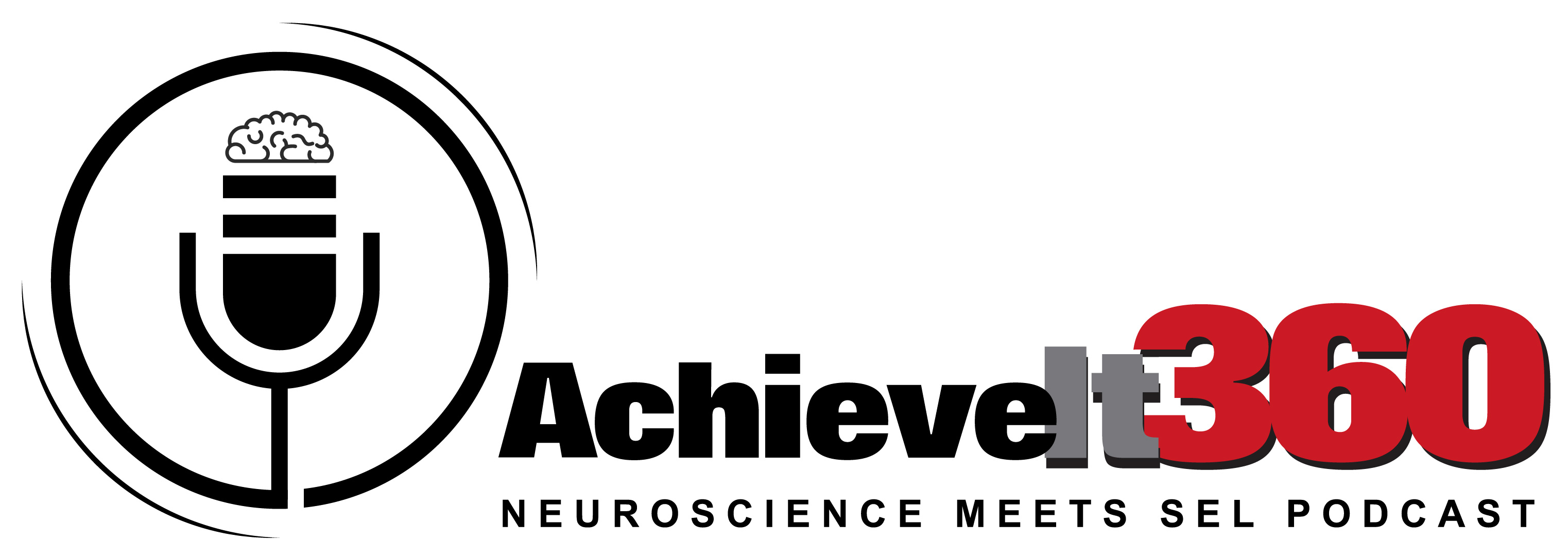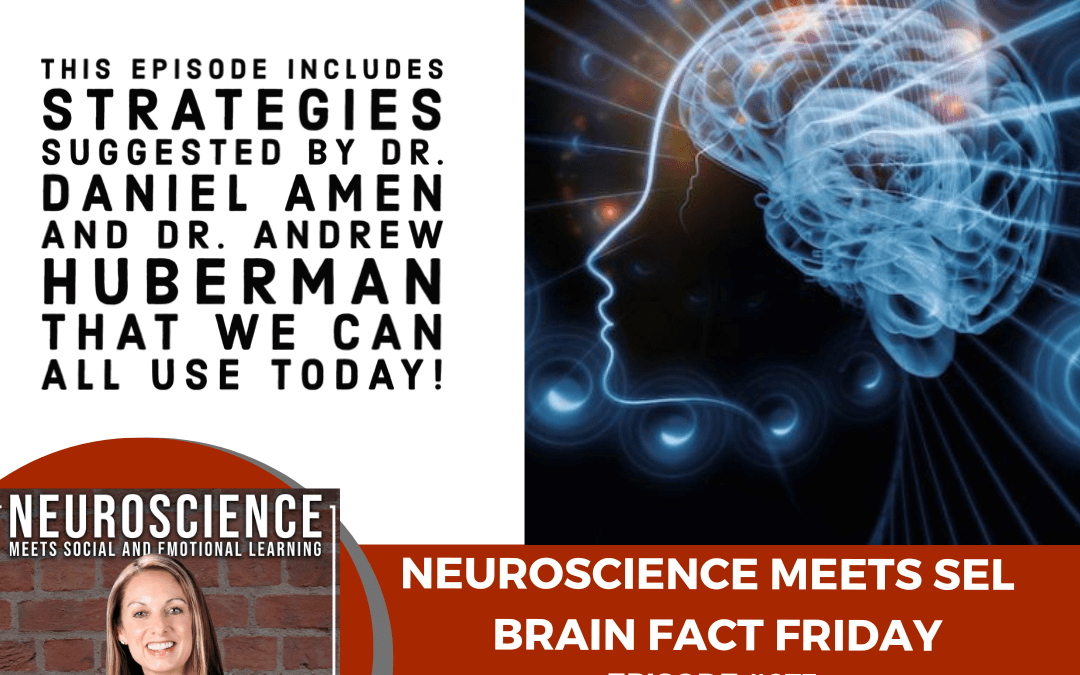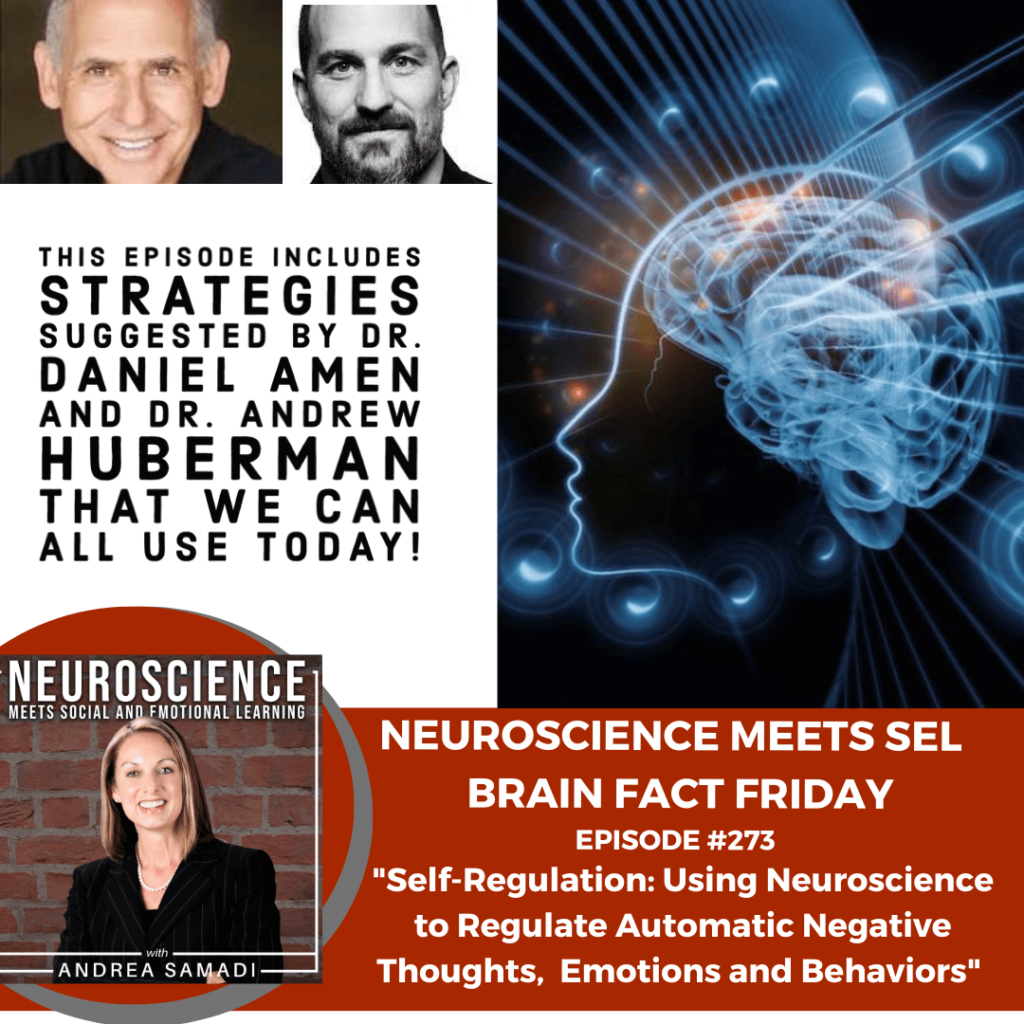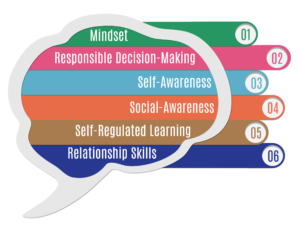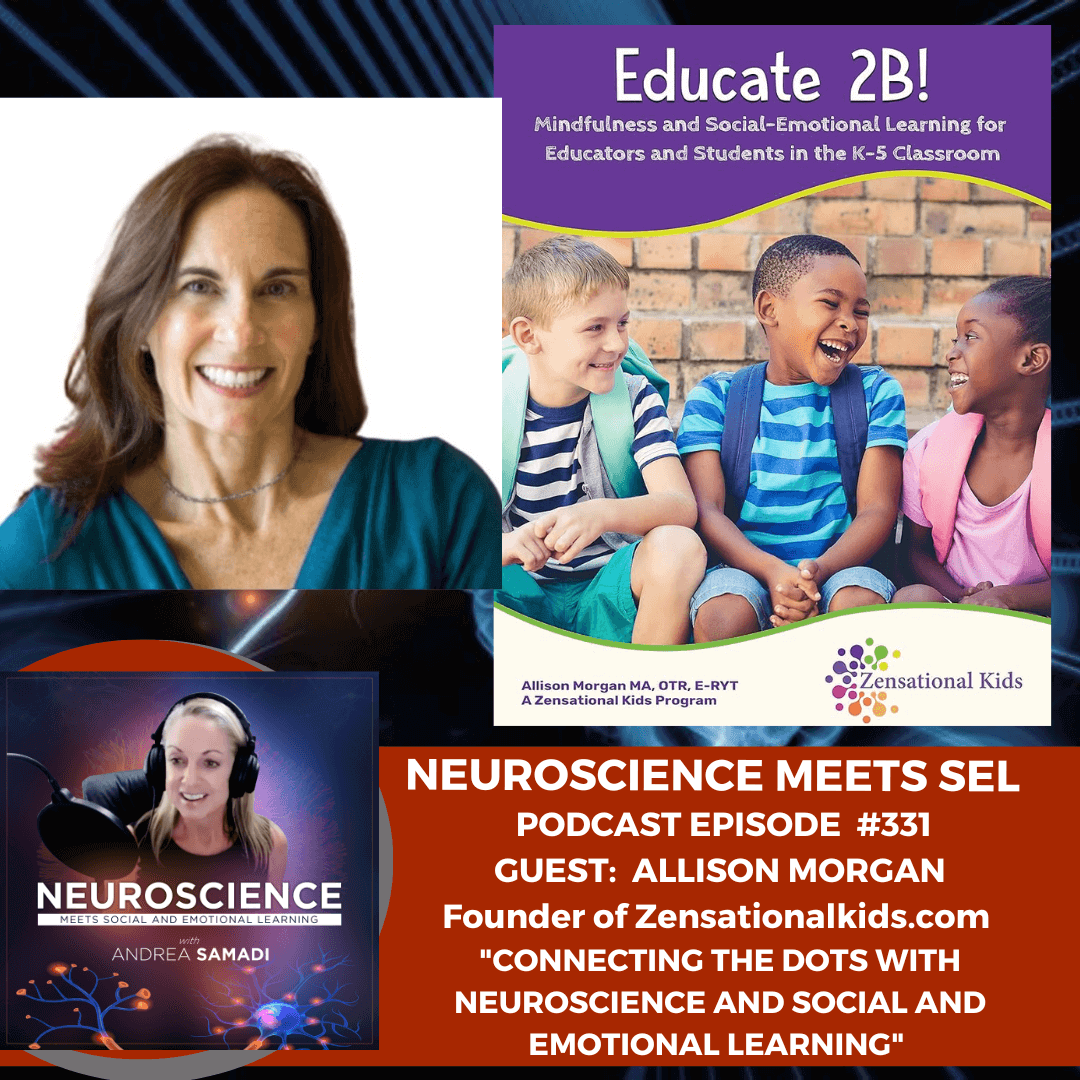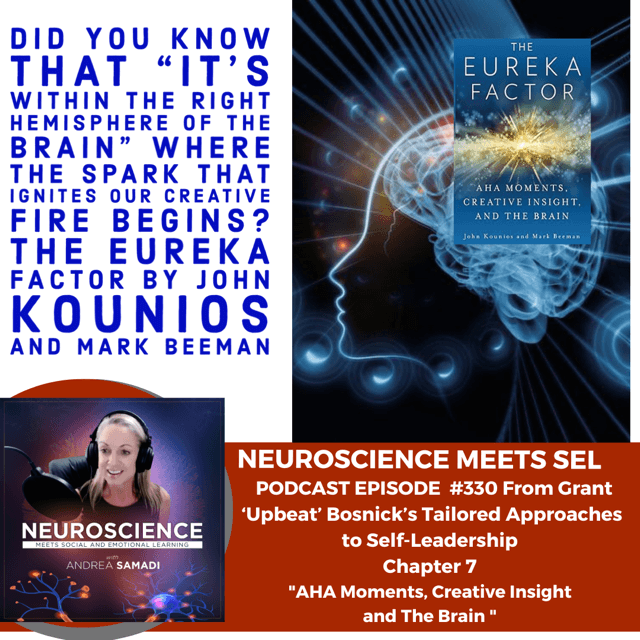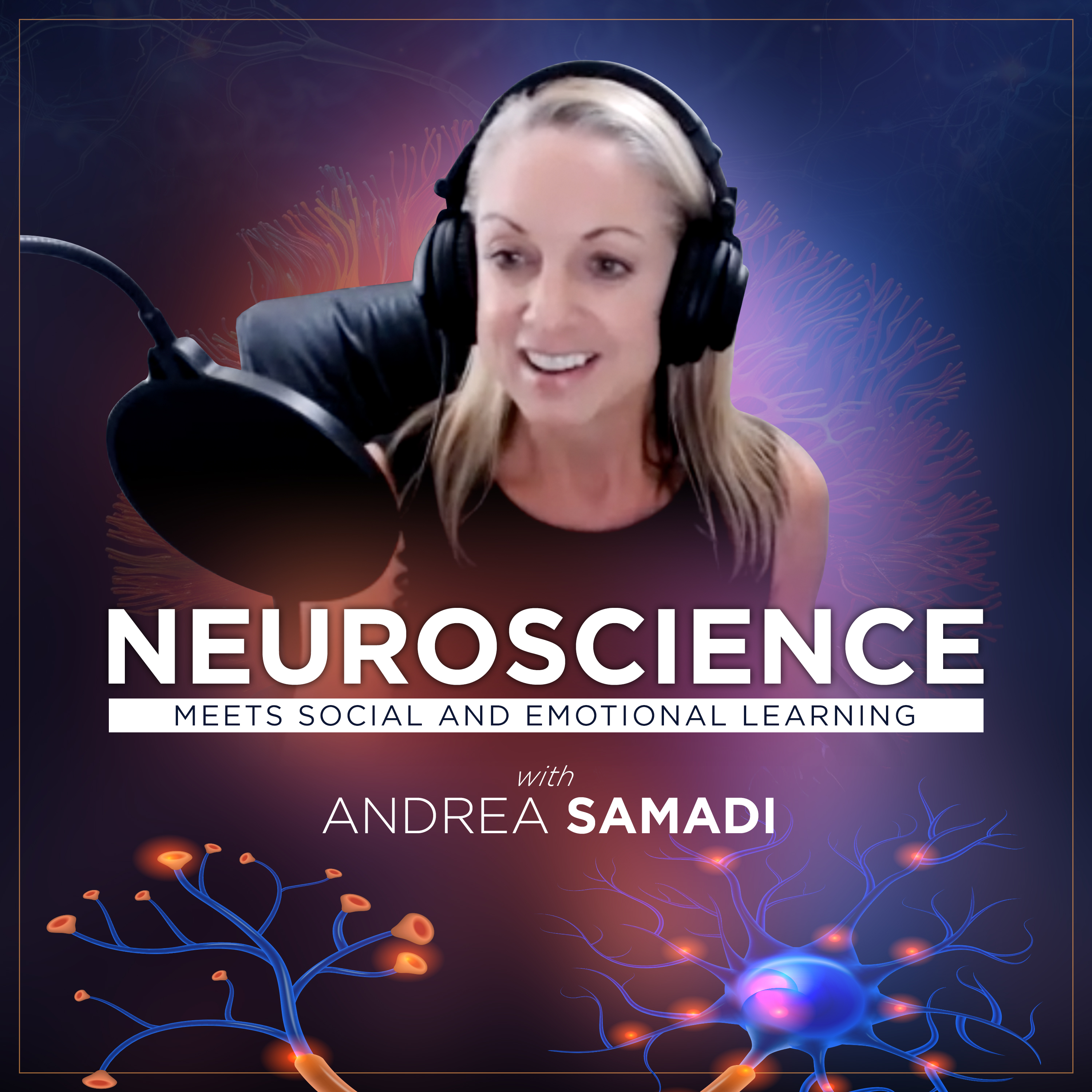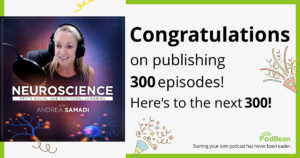“Self-regulation will always be a challenge, but if somebody’s going to be in charge, it might as well be me.” Daniel Akst
On today’s Episode #273 we will cover
✔ A review of Brain Fact Friday #112, where we introduced Self-Regulation, and why it’s important for our overall mental health and wellbeing.
✔ One strategy from the work of Dr. Daniel Amen for Self-Regulating Automatic Negative Thoughts.
✔ Two strategies from the work of Dr. Andrew Huberman–One on using self-regulation to calm ourselves down in less than a minute, and the other to strengthen the NO-GO Circuits in our brain to help with impulse control.
Welcome back to The Neuroscience Meets Social and Emotional Learning Podcast where we bridge the gap between theory and practice, with strategies, tools and ideas we can all use immediately, applied to the most current brain research to heighten productivity in our schools, sports environments and modern workplaces. For returning guests, welcome back, and for those who are new listeners, I’m Andrea Samadi and launched this podcast almost 4 years ago, to share how important an understanding of our brain is for our everyday life and results.
This season (Season 9) we will be focused on Neuroscience: Going Back to the Basics as we revisit our past Brain Fact Fridays, narrowing in on how anything new from the field of neuroscience can be tied to improving our productivity, our results, our mental and physical health. Why are we going back to the basics? When we are building something worthwhile, something that we want to last, going back to the foundations will help us to strengthen our understanding of our brain, and our mind, to our results, providing us with the extra strength we will need to overcome the obstacles and challenges that will come our way. My hopes are that this step backwards will help us to become better prepared to move forward, towards our goals, or whatever it is that we are working on this year, with this strong foundation in place.
Today’s EPISODE #273, we are going back to our second Brain Fact Friday, EPISODE #112, released in March of 2021 on “Training Your Brain to Self-Regulate Automatic Negative Thoughts and Emotions”[i] where we looked at our recent interview with my good friend Horacio Sanchez, from EPISODE #111 on “Finding Solutions to the Poverty Problem.”[ii]
Horacio Sanchez said, “Did you know that when we engage in inner speech, all the mechanisms of outer speech and the auditory process activate in the brain? Therefore, what we say to ourselves is just like hearing it said by someone else to us. Inform students (and ourselves) that inner speech can build them up or destroy them.” (Horacio Sanchez)[iii]
I brought up the damaging effects of Automatic Negative Thinking on one of our early episodes, #14 on Self-Regulation.[iv] This skill of managing our thoughts, emotions and behavior comes under the competency of self-regulation (one of the 6 social and emotional learning competencies that we covered in the beginning episodes of this podcast, to set the foundation for what I envisioned with the content we would be covering here. It’s these 6 pillars that I saw as the foundation for us to build upon, and improve and is the heart of The Neuroscience Meets SEL Podcast.
What is Self-Regulation and Why is it So Important to Be Able to Manage Those Negative Thoughts, Our Emotions and Even Our Behavior?
Self-regulation is “the ability to manage your emotions and behavior in accordance with the demands of the situation. It includes being able to resist highly emotional reactions to upsetting stimuli, to calm yourself down when you get upset, adjust to a change in expectations and (the ability) to handle frustration”[v] In other words, it’s the ability to bounce back after a setback or disappointment, and the ability to stay in congruence with your inner value system.
On EPISODE #111, I gave some examples of how we could teach self-regulation to our children and students, and even gave some thoughts on why it’s an important skill to master in the workplace. You can go back this episode if you want to review these tips by clicking on the link in the show notes, but for today’s episode, almost 3 years later, I wonder, “how good am I at self-regulation” and have I improved this skill at all over the years? Since this is a how-to podcast, where I want to provide tips for us all to use and implement immediately, backed by the most current neuroscience research, I thought I would check in with what Stanford Professor and Neuroscientist Dr. Andrew Huberman would say about self-regulation. I’m probably going to reflect back to his work, or anyone else who can explain how to implement the concepts I’m trying to reinforce on this podcast, or anyone who can help me to explain the details of science in a way that we can all understand and apply it. So far, I’ve found Dr. Daniel Amen (who I’ve talked a lot about on this podcast with his idea of controlling our ANTS, or automatic negative thoughts) and will look at Dr. Andrew Huberman’s work to see what he says about self-regulation.
Dr. Amen and Controlling Those ANTS
What I love about Dr. Amen’s work, is that he explains why eliminating negative thoughts is so important. Did you know that “every time your brain has a thought, it releases chemicals? Every time you have a sad, hopeless, mad, cranky, unkind, judgmental, or helpfulness thought, your brain immediately releases chemicals that make your body feel awful.[vi] He goes on to explain the physiological effects of negative thinking saying “your hands get cold and wet, your muscles get tense, your heart beats faster, and your breathing becomes shallower (and all of this activity) in your frontal and temporal lobes decreases which negatively affects your judgement, learning and memory.” (Dr. Amen).
Do what can we do to avoid this pitfall of making ourselves feel rotten? Dr. Amen suggests that we “work on disciplining the mind” to get rid of these Automatic Negative Thoughts to keep ourselves in a healthier frame of mind.
On our last episode, we talked about an effective strategy used in cognitive behavioral therapy[vii] of saying the word “SWITCH” in your head as you focus on switching the negative emotion that you feel to something more positive. This takes some practice, that’s for sure. I’ve always used the strategy of saying “STOP” when this happens and changing the thought pattern in my head to something more productive.
Also, remembering the idea of RESPONDING to situations with questions to dig deeper, and learn more, instead of REACTING with emotion, or jumping to conclusions, or incorrect assumptions, is always a better solution.
Now let’s dive a bit deeper here, and see what Dr. Andrew Huberman has to say about self-regulation.
Dr. Andrew Huberman on Self-Regulation
Dr. Huberman reminds us why self-regulation is important, and says that “knowledge of knowledge can actually help you to intervene” (which is why we are doing this podcast and breaking down the science so we can all use it to improve our lives) and he discusses why self-regulation with our behaviors is important. He notes a question to ask ourselves “when I’m thinking that I’m feeling low, nothing feels good, am I depressed? Maybe (he says) or maybe you’ve saturated the dopamine circuits and you’re now in the pain part of things. What do you do? (He says) you have to stop. You need to replenish dopamine. You need to stop engaging in the behavior (whatever it was you were doing that you noticed lost something for you) and then the pleasure for it will come back. You have to constantly control the hinge, make sure the hinge doesn’t get stuck in the pain or in pleasure.”[viii]
We covered this concept in depth with our interview with Dr. Anna Lembke and her book, Dopamine Nation on EPISODE #162[ix] where she dove deep with us on how we are constantly trying to distract ourselves from the present moment to be entertained” and “that we’re all running from pain—we’ll do almost anything to distract ourselves from ourselves” and that “we’ve lost the ability to tolerate even minor forms of discomfort.”
Here’s where I notice my inability to tolerate even mild forms of discomfort as Dr. Lembke was saying. Let’s take writing these episodes. I wake up early, go to my desk, and am ready to get back to my notes over the week where I’ve gathered ideas and research, and now I need to put them all in one place for this episode. It’s not as mentally challenging as I’ve already written the first episode, but now I’ve got to see if I can improve it somehow with the latest research, and while writing, the minute I get stuck on what to say next, I will get up, and do something to distract myself, and come back after a few minutes.
Is there a better, more effective, science-backed solution for me to use when I’ve hit a wall, and need a break? Dr. Andrew Huberman explained it beautifully on Mayim Bialik’s Podcast[x] (side-note, do you remember her? She’s an American Actress who was on the NBC Sitcom Blossom, and went on to study in the field of neuroscience, crossing paths with Dr. Huberman along the way. On this episode, she did with Dr. Huberman, he describes an activity he uses for stress reduction in minutes, that we can all use to self-regulate when we need it.
Try This Activity! How to Self-Regulate Your Brain in Less Than a Minute
I loved this episode with Dr. Huberman and Mayim[xi], as she talks about him as being “the smartest human being on the planet” and he talks about remembering her when she was interviewing at Graduate School and he didn’t miss a detail. There’s an obvious respect that each one has for the other.
On this episode, with Mayim, Dr. Huberman shares a quick and easy activity we can all to do calm us down in less than a minute. He says, “Do a double inhale through your nose, one longer inhale and then sneak in a quick second inhale, which re-inflates the sacks in your lungs, and then do a long full exhale to empty out all the air from your lungs” This, he says “naturally activates the neural circuits in the brain and body that shift that see-saw from sympathetic (alertness and stress) to parasympathetic.” It looks like this. Just one of these, Dr. Huberman says will return us to a calm state.
While reflecting back to our first episode on self-regulation, we did talk about a couple of examples to say “STOP” or “SWITCH” to stop those negative thoughts from ruminating in our head, but this breathing activity, I think is something I will try moving forward.
What About Self-Regulating Our Behaviors?
So now I think we all have a strategy we can use right away to calm ourselves down when we need to, but how else could we train our brain to self-regulate? This one, I learned from a podcast episode from Jessica Stillman’s INC Magazine’s article[xii] where she picks Dr. Huberman as a resource for this strategy. You can also watch an incredible interview with Shane Parrish[xiii] on this concept.
The important part to understand here is that our Basal Ganglia is vitally important for controlling our thoughts and actions and Dr. Huberman teaches us that “there are two main circuits that are both regulated by dopamine. Some of the circuits are involved in the go functions (where we lean into our work—its action oriented) and the other one is no-go and it involves certain neurotransmitters like dopamine to suppress behavior.”[xiv]
He gives some examples reminding us as adults, that most of the time we are operating with our GO circuits (waking up, making our bed, getting ready, go to work etc) but think of our kids and many of their circuits involves to NO go circuits, like when we tell our kids, sit still, don’t do that etc) and it’s not easy for them to do this. The research behind the whole marshmallow experiment that I re-enacted with my kids[xv] proves how important this skill is for our students’ future success, so I wondered, how can we all improve this NO-GO circuit in our brain?
Activity 2: How to Train Your Brain to Control Your Impulses and Self-Control
This is what Dr. Huberman does to intentionally train his brain to become stronger, keeping his impulses under control. He intentionally plans 20-30 NO-GO activities a day to strengthen this circuit in his brain. He says that the things you choose would be specific to you, and one way we both relate is that when I’m working in a block of time, and get stuck, I have this impulse to look at my phone, or get up and heat up my coffee or something. Anything to take me away for a minute of where I’m stuck. Instead of doing this, he suggests, stay there a minute longer and see if you can get past the block. This will strengthen my NO-GO circuit, and help me to reach those higher levels of productivity.
He mentions another example of how many of us find it difficult to sit and meditate. I remember the first time doing this I really struggled as I could hear the kids running around, and I really wanted to get up. This was because my GO circuits were stronger than my NO-GO circuits. What’s interesting is that you will have to monitor this one over time, because meditation and blocking out the world gets easier with time, so if I want to keep strengthening my NO GO circuit, I’ll have to look for 20-30 things (to replicate Dr. Huberman’s Strategy) that I want to do each day, and not do them, or at least, not do them right away.
Can you think of 20-30 things that you will suppress to strengthen YOUR NO-GO circuit?
If it’s difficult, begin with just 4 things. Here’s some ideas-
- Don’t eat the thing you were going to eat.
- Don’t get up from working when things are difficult.
- Change up a work out and don’t do it the same.
- Don’t pick up your phone when you are working.
Whatever you habitually do, do it differently and it will feel strange at first, until you strengthen this part of your brain that Dr. Huberman says is like “keeping the blad sharp on both sides (the get up and go into action side, and the don’t go, leave the phone alone) side.
REVIEW AND CONCLUSION:
To Review and Conclude this week’s Brain Fact Friday, we took a deeper dive into EPISODE #112, on “Training Your Brain to Self-Regulate Automatic Negative Thoughts and Emotions”[xvi] with some tips from Dr. Daniel Amen on how to stop those Automatic Negative Thoughts from making ourselves feeling rotten, and disciplining our mind to stay in the positive.
Then we went to Dr. Andrew Huberman’s research with 2 strategies for calming our mind in one minute with that breathing exercise and the idea of strengthening our NO-GO circuits by suppressing certain actions in our day.
I hope that you find these strategies helpful for improving your day to day work and personal life, and that we all can use the science behind these strategies to strengthen our brain and our results. I have to say that I did use the breathing strategy BEFORE recording this episode, and plan on carving out some NO GO activities within my day today. I’d love to know what you think of this episode.
With that, I’ll see you next week where we will look at what’s NEW for building a faster, stronger, more resilient brain.
RESOURCES TO FOLLOW:
To follow Dr. Andrew Huberman’s work https://hubermanlab.com/
To follow Dr. Daniel Amen’s work https://www.amenclinics.com/
FOLLOW ANDREA SAMADI:
YouTube Channel: https://www.youtube.com/c/AndreaSamadi
Website https://www.achieveit360.com/
LinkedIn: https://www.linkedin.com/in/samadi/
Facebook: https://www.facebook.com/Achieveit360com
Neuroscience Meets SEL Facebook Group https://www.facebook.com/groups/2975814899101697
Twitter: https://twitter.com/andreasamadi
Instagram: https://www.instagram.com/andreasamadi/
REFERENCES:
[i] Neuroscience Meets Social and Emotional Learning Podcast EPISODE #112 on “Training Your Brain to Self-Regulate Automatic Negative Thoughts and Emotions”https://andreasamadi.podbean.com/e/brain-fact-friday-on-training-your-brain-to-self-regulate-automatic-negative-thoughts-and-emotions/
[ii] Neuroscience Meets SEL Podcast Episode #11 with Horacio Sanchez on “Finding Solutions to The Poverty Problem” https://andreasamadi.podbean.com/e/resiliency-expert-and-author-horacio-sanchez-on-finding-solutions-to-the-poverty-problem/
[iii] Horacio Sanchez on LinkedIn https://www.linkedin.com/posts/hsanchezceo_neuroscience-education-activity-6770706945264386048-BDCn
[iv] Neuroscience Meets SEL Episode #14 with Andrea Samadi on “Self-Regulation: The Foundational Learning Skill for Future Success” https://andreasamadi.podbean.com/e/self-regulation-the-foundational-learning-skill-for-future-success/
[v] Edutopia article “Teaching Self-Regulation by Modeling” (January, 2019) https://www.edutopia.org/video/teaching-self-regulation-modeling
[vi] The Number one Habit to Develop In Order to Feel More Positive by Dr. Daniel Amen August 16, 2016 https://www.amenclinics.com/blog/number-one-habit-develop-order-feel-positive/
[vii] What is Cognitive Behavioral Therapy with Therapist Kati Morton YouTube uploaded Sept. 23, 2013 https://www.youtube.com/watch?v=g7B3n9jobus
[viii] Neuroscientist Dr. Andrew Huberman on Self-Regulation https://www.youtube.com/watch?v=bQ1zYZHg8k4
[ix] Neuroscience Meets Social and Emotional Learning Podcast EPISODE #162 with Dr. Anna Lembke on “Dopamine Nation: Finding Balance in the Age of Indulgence” https://andreasamadi.podbean.com/e/medical-director-of-addictive-medicine-at-stanford-university-dr-anna-lembke-on-dopamine-nation-finding-balance-in-the-age-of-indulgence/
[x] Mayim Bialik’s Podcast with Andrew Huberman on Regulating Stress in Real-Time. https://www.youtube.com/watch?v=Mk5GC269WT0
[xi] Mayim Bialik’s Podcast with Andrew Huberman on Regulating Stress in Real-Time. https://www.youtube.com/watch?v=Mk5GC269WT0
[xii] Stanford Neuroscientist: How to Train Your Self-Control So You Don’t Mess Up Your Life by Jessica Stillman https://www.inc.com/jessica-stillman/stanford-impulse-control-no-go-function.html
[xiii] How to Control Your Impulses So They Don’t Ruin Your Life https://www.youtube.com/watch?v=8wpP1W8eoaI&t=1s
[xiv] IBID
[xv] The Marshmallow Experiment with Andrea Samadi Uploaded Nov. 2, 2017 https://www.youtube.com/watch?v=Rq903CXJUpg
[xvi] Neuroscience Meets Social and Emotional Learning Podcast EPISODE #112 on “Training Your Brain to Self-Regulate Automatic Negative Thoughts and Emotions”https://andreasamadi.podbean.com/e/brain-fact-friday-on-training-your-brain-to-self-regulate-automatic-negative-thoughts-and-emotions/
Podcast: Play in new window | Download
Subscribe: Apple Podcasts | RSS
